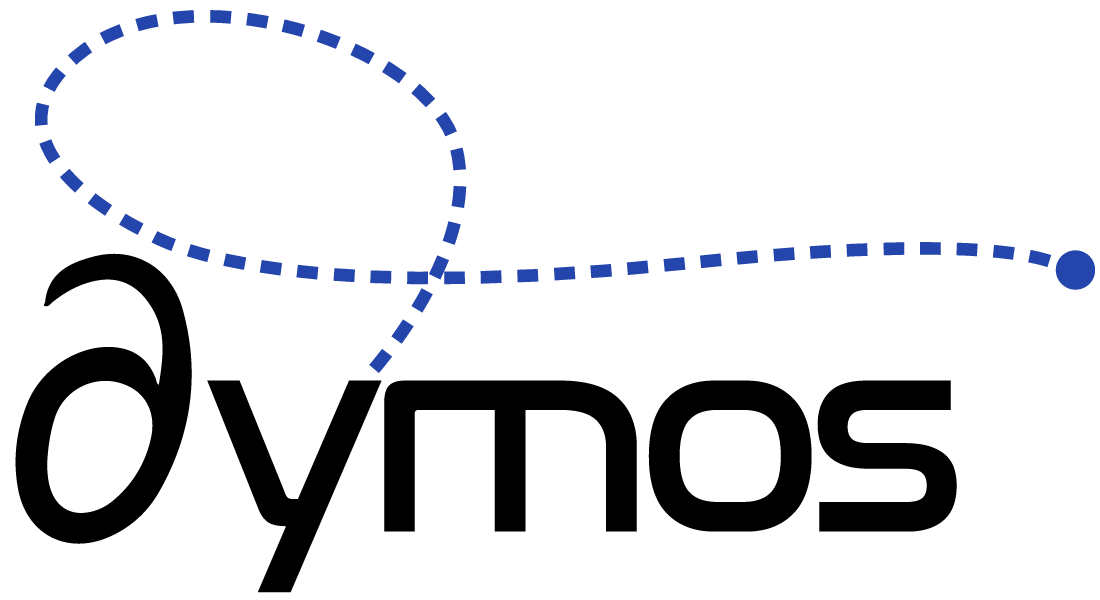Brachistochrone with tandem phases#
Things you’ll learn through this example
How to run two phases with different ODE’s and different grids simultaneously in time.
This is a contrived example but it demonstrates a useful feature of Dymos we call tandem phases. Tandem phases are two phases that occur simultaneously in time (having the same start time and duration) but with different dynamics. In practice, this can be useful when some of your dynamics are quite expensive and you can tolerate evaluating them on fewer nodes. Or perhaps one phase has relatively rapid dynamics compared to the other one. For instance, thermal responses tend to happen vary rapidly in an electric aircraft compared to changes in the flight dynamics state of the vehicle.
In this example we’ll evaulate the standard brachistochrone problem, but limit the arclength of the wire along which the bead travels. The arclength is integrated as a state variable, and can be done so along with the typical states x, y, and v, but for the purposes of this contrive example we’ll perform this integration in a separate phase that occurs at the same time.
The first phase to integrate the standard brachistochrone ODE#
Things to note about this phase
The transcriptions for the two phases are delcared up front so that
tx1may be used as both the transcription of the second phase, and for outputting the states of the first phase to the control input nodes of the second phase.
This secondary timeseries is the key to making this sort of formulation work.
from dymos.examples.brachistochrone.brachistochrone_ode import BrachistochroneODE
import numpy as np
import matplotlib.pyplot as plt
plt.switch_backend('Agg')
import openmdao.api as om
import dymos as dm
p = om.Problem(model=om.Group())
p.driver = om.pyOptSparseDriver()
p.driver.options['optimizer'] = 'SLSQP'
p.driver.options['print_results'] = False
p.driver.declare_coloring()
# The transcription of the first phase
tx0 = dm.GaussLobatto(num_segments=10, order=3, compressed=False)
# The transcription for the second phase (and the secondary timeseries outputs from the first phase)
tx1 = dm.Radau(num_segments=20, order=9, compressed=False)
#
# First Phase: Integrate the standard brachistochrone ODE
#
phase0 = dm.Phase(ode_class=BrachistochroneODE, transcription=tx0)
p.model.add_subsystem('phase0', phase0)
phase0.set_time_options(fix_initial=True, duration_bounds=(.5, 10))
phase0.add_state('x', fix_initial=True, fix_final=False)
phase0.add_state('y', fix_initial=True, fix_final=False)
phase0.add_state('v', fix_initial=True, fix_final=False)
phase0.add_control('theta', continuity=True, rate_continuity=True,
units='deg', lower=0.01, upper=179.9)
phase0.add_parameter('g', units='m/s**2', val=9.80665)
phase0.add_boundary_constraint('x', loc='final', equals=10)
phase0.add_boundary_constraint('y', loc='final', equals=5)
# Add alternative timeseries output to provide control inputs for the next phase
phase0.add_timeseries('timeseries2', transcription=tx1, subset='control_input')
The ODE for integrating the arc-length of the wire#
class BrachistochroneArclengthODE(om.ExplicitComponent):
def initialize(self):
self.options.declare('num_nodes', types=int)
def setup(self):
nn = self.options['num_nodes']
# Inputs
self.add_input('v', val=np.zeros(nn), desc='velocity', units='m/s')
self.add_input('theta', val=np.zeros(nn), desc='angle of wire', units='rad')
self.add_output('Sdot', val=np.zeros(nn), desc='rate of change of arclength', units='m/s')
# Setup partials
arange = np.arange(nn)
self.declare_partials(of='Sdot', wrt='v', rows=arange, cols=arange)
self.declare_partials(of='Sdot', wrt='theta', rows=arange, cols=arange)
def compute(self, inputs, outputs):
theta = inputs['theta']
v = inputs['v']
outputs['Sdot'] = np.sqrt(1.0 + (1.0/np.tan(theta))**2) * v * np.sin(theta)
def compute_partials(self, inputs, jacobian):
theta = inputs['theta']
v = inputs['v']
cos_theta = np.cos(theta)
sin_theta = np.sin(theta)
tan_theta = np.tan(theta)
cot_theta = 1.0 / tan_theta
csc_theta = 1.0 / sin_theta
jacobian['Sdot', 'v'] = sin_theta * np.sqrt(1.0 + cot_theta**2)
jacobian['Sdot', 'theta'] = v * (cos_theta * (cot_theta**2 + 1) - cot_theta * csc_theta) / \
(np.sqrt(1 + cot_theta**2))
The second phase to integrate the arclength of the wire.#
Things to note about this phase
Initial time and duration are input from those of the first phase (note the connections on line 16).
theta and v are time-varying but determined by the first phase. Note the setting of
opt=Falseand the connections on lines 18 and 19.
phase1 = dm.Phase(ode_class=BrachistochroneArclengthODE, transcription=tx1)
p.model.add_subsystem('phase1', phase1)
phase1.set_time_options(fix_initial=True, input_duration=True)
phase1.add_state('S', fix_initial=True, fix_final=False,
rate_source='Sdot', units='m')
phase1.add_control('theta', opt=False, units='deg', targets='theta')
phase1.add_control('v', opt=False, units='m/s', targets='v')
#
# Connect the two phases
#
p.model.connect('phase0.t_duration_val', 'phase1.t_duration')
p.model.connect('phase0.timeseries2.theta', 'phase1.controls:theta')
p.model.connect('phase0.timeseries2.v', 'phase1.controls:v')
# Minimize time
phase1.add_objective('time', loc='final', ref=1)
# Constraint the length of the wire.
phase1.add_boundary_constraint('S', loc='final', upper=11.5)
Setup and run#
p.model.linear_solver = om.DirectSolver()
p.setup()
p['phase0.t_initial'] = 0.0
p['phase0.t_duration'] = 2.0
p.set_val('phase0.states:x', phase0.interp('x', ys=[0, 10]))
p.set_val('phase0.states:y', phase0.interp('y', ys=[10, 5]))
p.set_val('phase0.states:v', phase0.interp('v', ys=[0, 9.9]))
p.set_val('phase0.controls:theta', phase0.interp('theta', ys=[5, 100]))
p['phase0.parameters:g'] = 9.80665
p['phase1.states:S'] = 0.0
res = dm.run_problem(p)
/usr/share/miniconda/envs/test/lib/python3.10/site-packages/openmdao/recorders/sqlite_recorder.py:227: UserWarning:The existing case recorder file, dymos_solution.db, is being overwritten.
Model viewer data has already been recorded for Driver.
Full total jacobian was computed 3 times, taking 0.289378 seconds.
Total jacobian shape: (223, 287)
Jacobian shape: (223, 287) ( 7.38% nonzero)
FWD solves: 30 REV solves: 0
Total colors vs. total size: 30 vs 287 (89.5% improvement)
Sparsity computed using tolerance: 1e-25
Time to compute sparsity: 0.289378 sec.
Time to compute coloring: 0.314816 sec.
Memory to compute coloring: 2.472656 MB.
/usr/share/miniconda/envs/test/lib/python3.10/site-packages/openmdao/visualization/opt_report/opt_report.py:634: UserWarning: Attempting to set identical low and high ylims makes transformation singular; automatically expanding.
ax.set_ylim([ymin_plot, ymax_plot])
Plots#
The following plots show the trajectory of the x, y, and v states (the top plot) and the trajectory of the arclength state (the bottom plot). Note that these plots are linked, but use different grid spacings - the arclength is integrated on a significantly more dense grid. This is enabled by the secondary timeseries output timeseries2 in the first phase.
Show code cell source
from bokeh.plotting import figure, show, output_notebook, output_file, save
from bokeh.palettes import d3
from bokeh.resources import INLINE
from bokeh.models import Legend
from IPython.display import HTML
c = d3['Category10'][10]
i = np.array(0)
legend_contents = []
sol_case = om.CaseReader('dymos_solution.db').get_case('final')
sol_x = sol_case.get_val('phase0.timeseries.x')
sol_y = sol_case.get_val('phase0.timeseries.y')
sol_v = sol_case.get_val('phase0.timeseries.v')
sol_t0 = sol_case.get_val('phase0.timeseries.time')
sol_t1 = sol_case.get_val('phase1.timeseries.time')
sol_s = sol_case.get_val('phase1.timeseries.S')
def add_plot(p, x, y, label, i):
circle = p.circle(x.ravel(), y.ravel(), color=c[i], size=5)
line = p.line(x.ravel(), y.ravel(), color=c[i])
legend_contents.append((label, [circle, line]))
i += 1
p1 = figure(width=800, height=300)
add_plot(p1, sol_t0, sol_x, 'x (m)', i)
add_plot(p1, sol_t0, sol_y, 'y (m)', i)
add_plot(p1, sol_t0, sol_v, 'v', i)
add_plot(p1, sol_t1, sol_s, 'arclength', i)
p1.add_layout(Legend(items=legend_contents), 'right')
p1.xaxis.axis_label = 'time (s)'
p1.yaxis.axis_label = 'state value'
p1.legend.location = 'bottom_right'
output_file('plot.html', mode='inline')
plot_file = save(p1)
HTML(filename=plot_file)

